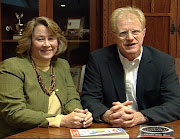
Excerpt from "Realm of the Ring Lords" by Laurence Gardner:
The City of Alexandria, which had been founded in the North of Egypt in 331 BC by Alexander the great of Macedonia, was the most important cultural centre of the ancient world. It was an academic focus for the greatest scholars, scientists, doctor's, mathematicians and philosophers, who traveled from far and wide to study the largest collection of arcane documents ever amassed in one arena. But, one day in the year AD 391, a perverted Christian mob, led by the Roman-appointed Bishop Theophilus, marched upon the Serapeum where the library collection was held.
Close to the harbor, this majestic building, with its marble steps, columned halls and magnificent gardens, had been a centre of Egyptian worship for seven centuries, as well as being an inspired foundation of Greek learning, housing many hundreds of thousands of valuable papyrus and parchment texts, together with fine statues, tapestries and other works of art. To this truly cosmopolitan academy came Egyptians, Macedonians, Greeks, Anatolians, Italians, Arabians, Persians, Indians and Jews - but according to Bishop Theophilus and his Christians it was a satanic and sinful place, full to bursting with historical records that were superfluous to Imperial requirement and contrary to the newly devised Church teaching. Emperor Theodosius of Rome (AD 385-412) therefore brought to bear the Council of Creeds of Nicaea (AD 325) and Constantinople (AD 381), demanding that orthodox Christianity must be imposed upon Alexandria and that the contents of the Serapeum should be destroyed.
Once inside the great library, the angry mod, acting upon the Emperor's instruction, smashed everything to pieces and burnt every written text they could find - more than half a million irreplaceable documents representing the finest minds of the ages was lost for all time, leaving the Church free, henceforth, to make up its own history, to interpret its own science and to establish its own philosophy.
Following this atrocity, while under the leadership of Cyril, the patriarch of Alexandria, the clerics then turned upon the scholars themselves - especially the women, who were said to have no place in the academic arena! They pursued them for years, hounding and slaughtering, until the last of them was hacked to death on Lenten day in March AD 415. She was Hypatia, a professor of philosophy, a noted authority on the works of Plato and a teacher of algebraic mathematics. But, in the eyes of the Church, Plato was a heretic and Hypatia was a witch who must be dealt with accordingly. On being wrested from her carriage, she was disrobed and dragged naked to the churchyard of Caesarium by a group of Christian monks. There, undergoing death by torture at the age of forty-five, she had the flesh scooped from her bones with sharp tiles and oyster shells before her remains were scattered as a public warning in the streets of Alexandria.
Hypatia, daughter of the Greek geometrician Theon, wrote a renowned work called the Astronomical Canon and a commentary on The Conics of Apollonius (a student of Euclid who, in the 3rd century BC, first introduced the now familiar terms ellipse, parabola and hyperbola). She invented and perfected many devices for calulating astronomical measurement, including the Planesphere and, in particular, the Astrolabe - an instrument used to measure the height of stars above the horizon. Once set, astrolabes would identify the entire sky and they became widely used for maritime navigation.
Another of Hypatia's inventions was the hydroscope, which determined the specific gravity of liquids. To the Christian bishops, however, she was a sorceress and when, many centuries later, the Italian Renaissance artist Raphael painted his masterwork "The School of Athens", he was instructed to remove Hypatia from the scene in order to make his work acceptable to the bishop of Rome.





























No comments:
Post a Comment